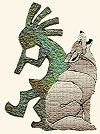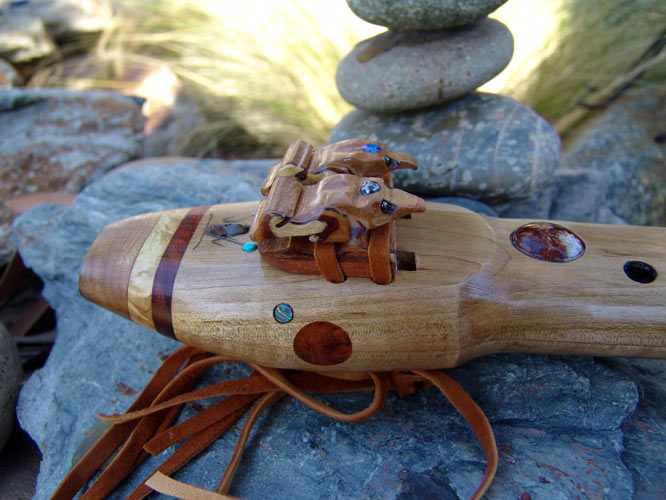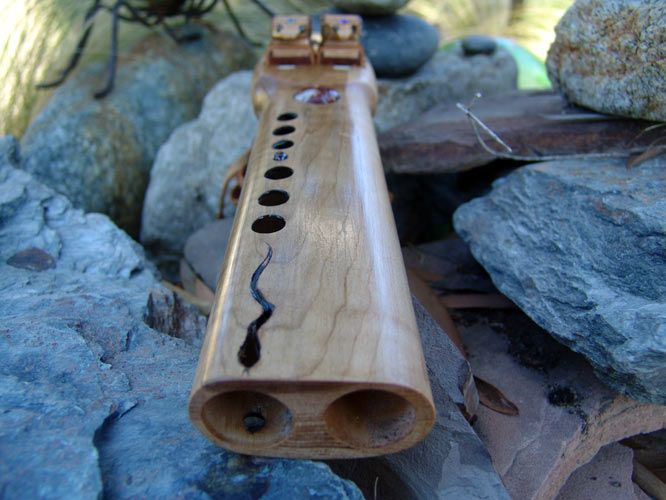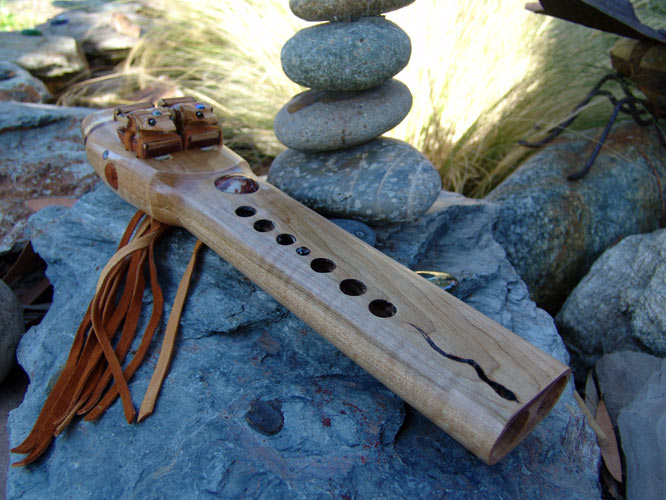$435.00
FREE DOMESTIC SHIPPING
Curly Cherry Dm/5 drone.
SOLD
Measuring just 12-7/8” in length, with a 7/8” bore diameter, this little flute could be characterized as a pocket drone…..If you wear abnormally large pants, or a trench coat. At 5 octaves above middle D, this instrument is without question, an alto flute, with all the good and bad that comes with such an instrument. Not being the magician some folks believe me to be, this flute is incapable of reaching the second octave….at least by me.
Woods used, beginning at the mouthpiece, include SE Asian amboyna burl, bonded to box elder burl, and capped with the cherry. Matching 16mm disks of the amboyna burl are also inlaid to the sides of the compression chamber. The matching fetish blocks are cut from cherry, bonded to a base of Oklahoma red cedar, for moisture control. They are not bullfrogs……unless you want them to be. They are really small birds, given the size of the instrument. Wing overlay to each includes abalone, yew burl, and madrona burl, while the left fetish is capped with curly sycamore, and the right, with mappa burl.
Inlay, starting at the mouthpiece, includes a fiery little 7x11mm Mexican boulder opal, flanked by 4mm turquoise cabs, while the disks to each side of the compression chamber, are accented by 5mm abalone dots. Forward from the fetish blocks, the sound chamber is accented with a 22mm Mexican crazy lace agate, while each set of three fingers is offset with a 6mm dome cut almandine garnet. Lastly, the left fetish block has a 6mm Brazilian azotic topaz set to the crown with 2.8mm hematite beads set as eyes, while the right has a 6mm dome cut hematite bead set to the crown, and again, hematite beads set as eyes.
The flute was tuned at 72.7 degrees, @ 56% humidity, in Hermosa Beach CA, and while the fetish ties run through the flute, making the underside look like a spaghetti dinner, it is unnecessary to remove the blocks for drying purposes, simply loosening the deerskin and gently pulling each block to the side, is sufficient for drying purposes. Should the blocks be removed entirely, the ties are best reinserted using a toothpick so as not to damage the channels. Each block, as noted on the underside, is specific to its side of the instrument.
SOLD







